How to Remove, Rebuild, & Reinstall Front Brake Calipers
1990-1994 Lexus LS400
Brake Calipers take abuse year round. The extreme heating they endure in summer, extreme temperature changes in the winter combined with having to run through the muck of whatever the road has to offer can start to effect the performance. This can result in the shaking, pulling, or loss of efficiently while braking. The Lexus caliper rebuild is a relatively easy job.
Tools Needed:
- Breaker bar or impact wrench
- Sockets & socket wrenches
- Jack
- 2-Ton jack stands
- Wheel chocks
- Box wrenches
- Thin flat-head screwdriver
- Air compressor
- Pliers
- Torque wrench
Parts/Supplies Needed:
- Shop towels
- Plastic bag
- Gaskets (For Front Flexible hose)
- Caliper rebuild kit (1990-1992) = #04479-50030
- Caliper rebuild kit (1993-1994) = #04479-50051
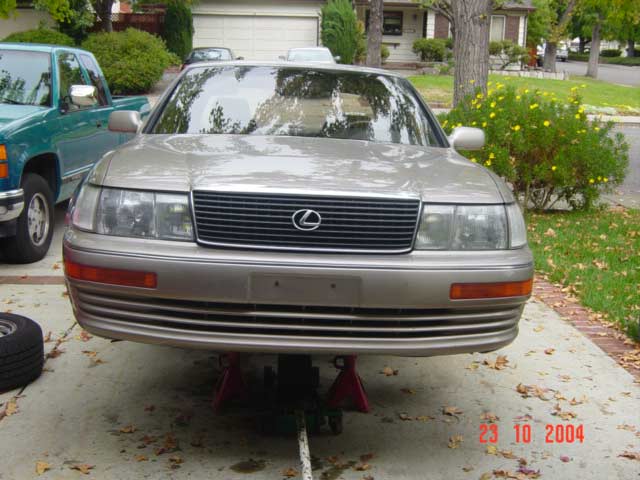
1) Set the parking brake, jack up the car, and remove the wheels. Taking a crooked picture is optional.
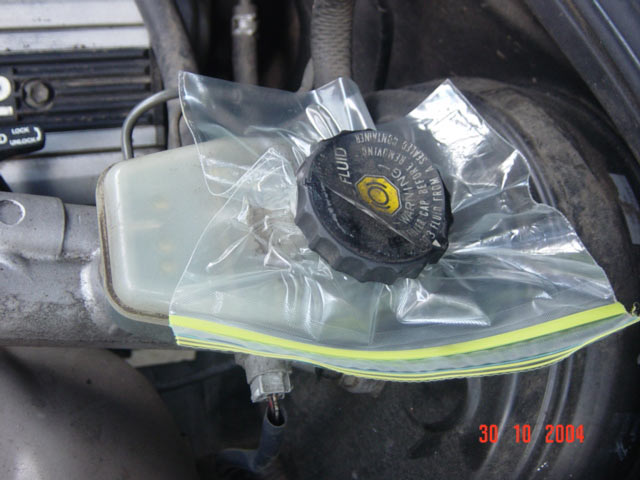
2) Place a plastic bag over the brake fluid reservoir and screw the cap back on. This will help create a vacuum when you remove the brake lines.
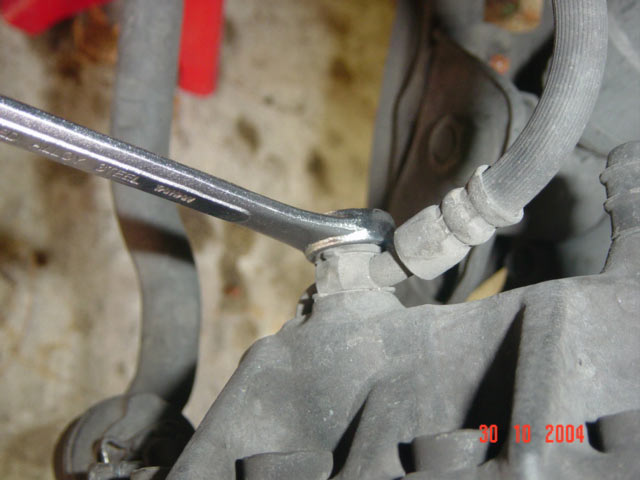
3) Remove the brake line. I used a 14mm box wrench and a hammer to loosen the nut. Be sure to use the box end of the wrench and keep it flush at the base of the bolt to avoid rounding the bolt head. The bolt will remove fully but keep an eye open for the brass washers flanking both sides of the nut. Tuck the brake line up under the wheel well as high as you can once you remove the bolt. This will prevent the line from dripping fluid all over the place.
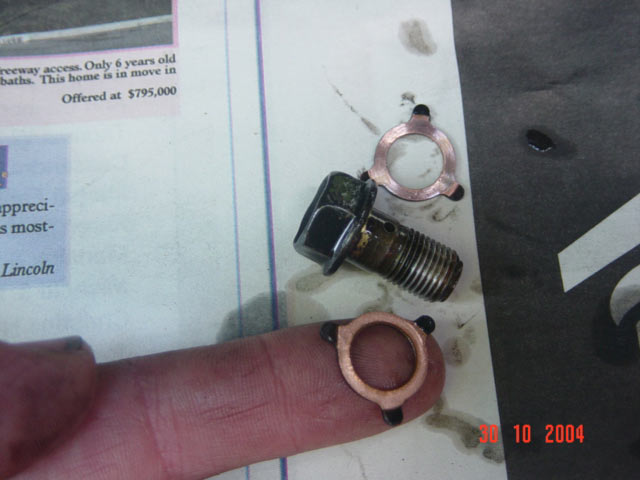
Here is the bolt removed along with the two washers (actually gaskets).

4) Remove this 14mm bolt holding the brake caliper to the torque plate. Also remove the lower bolt that looks just like this one. A thin 17 mm wrench can be used to hold the nut on the other side of the caliper flange from moving.

5) Remove the brake caliper. This is a good time to check and inspect your pads, rotor and general wear pattern.
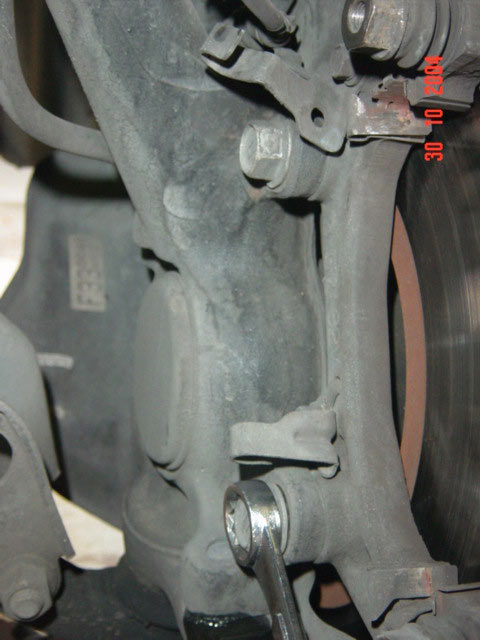
6) Remove the pads and complete your inspection. If you will be reinstalling the same pads over the same rotors be sure to keep the pads in order so they go back into the same slot. In my case, I went ahead and installed new rotors and pads. These two bolts will remove the torque plate; they are torqued on at 87 ft-lb so you may need a breaker bar.
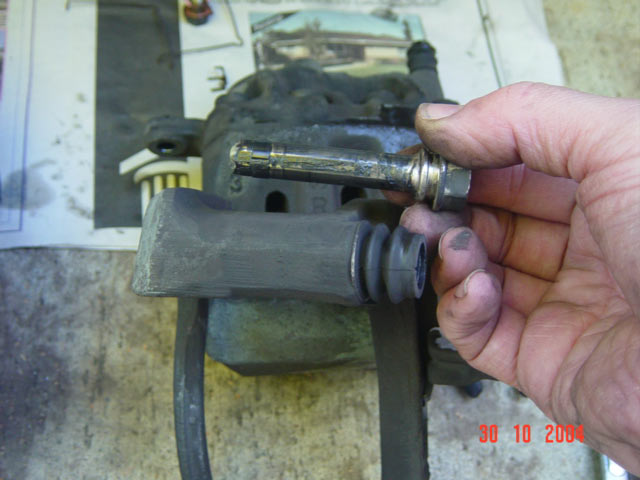
7) Remove the two sliding pins (covered with old grease) from the torque plate. In my case, the dust boots are in excellent shape so I just slid the pins out. The dust boot will come with your rebuild kit but I chose not to replace mine. Note the bushing at the end of the pin. When you pull out the other sliding pin, you will notice that the two bushings are different. It is critical to know that the smooth bushing goes in the top chamber while the other grooved bushing goes in the lower. Just look at them when you pull them out – you’ll see it.

8) To remove the pistons from the caliper, use some compressed air and a nozzle inserted in the brake line opening. Keep the bleeder valve closed and apply some pressure. Start with about 40psi and increase as needed. These pistons will eventually come out with some serious force so only use the pressure you need and keep your fingers clear. Use a block of wood to allow the pistons to hit something soft when the come out. Hint: If you use a thin enough piece of wood you may not have to use a pliers in the next step.

9) Usually, one piston will release while the other is now half in and half out. Use some pliers to wiggle out the last piston. The pliers will slightly scar the side of the piston just above the boot but that is not a problem at all. Do not grab the piston below the boot – that surface should remain smooth and clean at all times.

Here are my two pistons. You can see some slight scars (courtesy of the pliers) on the piston on the right. These are not bad but they have rubber wear on them from the seals.

10) Pistons and sliding pins all cleaned up. Use brake fluid and a household green scrubber pad to clean the pistons. Use brake cleaner on the pins and the pin chamber. Get it all as clean as you can. In this picture I also included the two new bushings. You can barely see that one is smooth (top) and one is grooved (bottom).
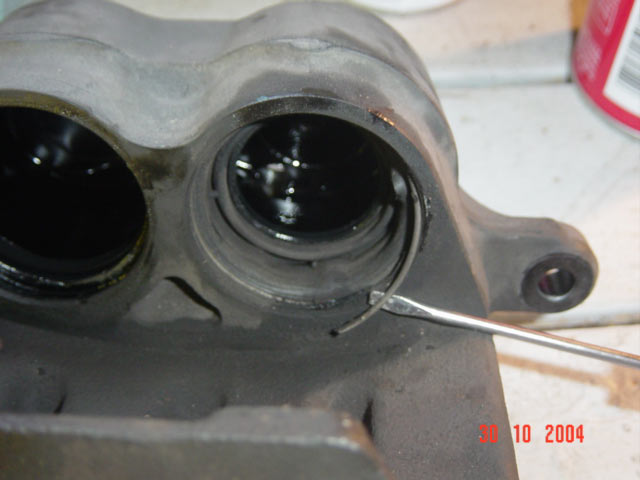
11) Push the rubber piston boot all the way into the chamber as to expose the retainer ring. Remove the retainer ring and piston boot from both sides.
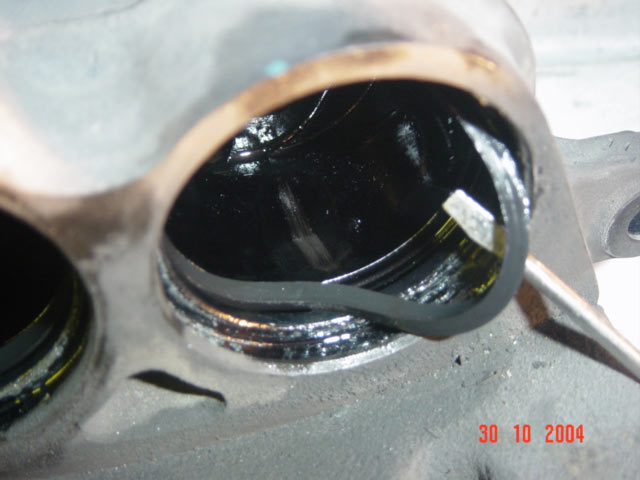
12) Now remove the piston seals. Take care not to scratch in piston chamber walls.

New piston boots, piston seals, and retainer rings will come with the rebuild kit from your dealer. They will also throw in some “brake caliper” grease. Ooooh!

13) Grease the piston seals and install them in the rear slot of the chamber. As always, the new ones go where the old ones went.
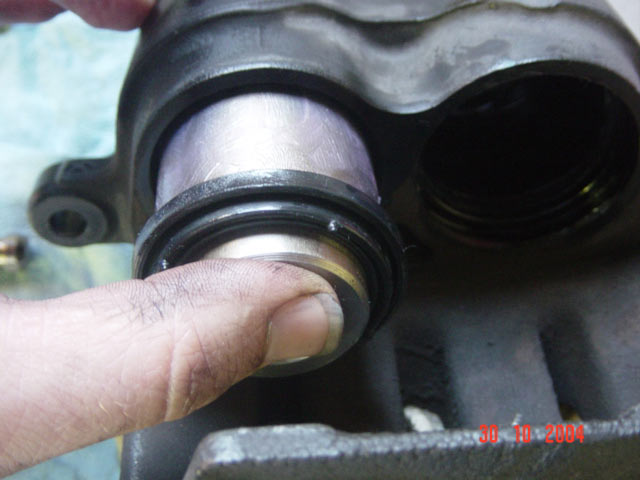
14) Grease the walls of the piston with a thin layer of grease. Install the boot over the piston head and slide the prepared piston into the chamber. For the piston to clear the seal, you will need to apply some firm pressure to the piston but by no means any real force.
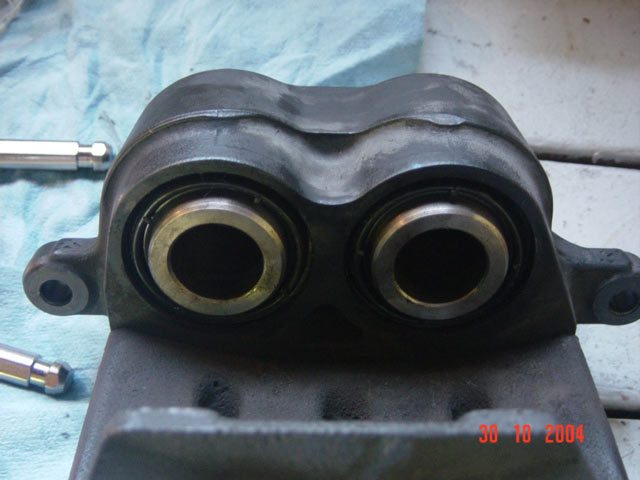
15) Here’s what they should look like. To install the retainer ring, push the piton all the way into the chamber as to expose the base of the boot as much as possible. Install the retainer ring.
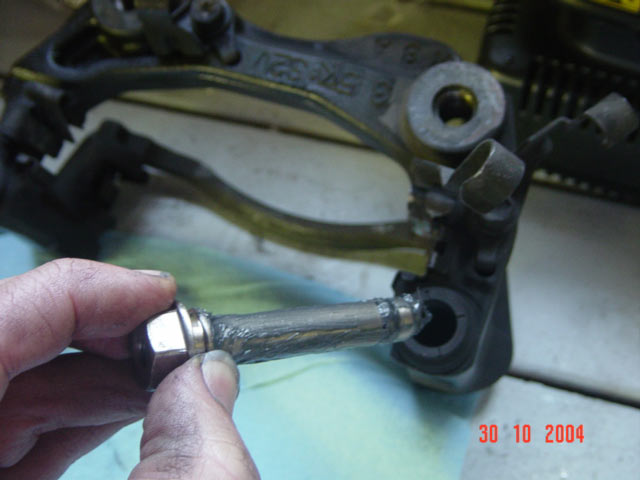
16) Install new bushings and apply some new grease to the sliding pin. Pin bushing upper is part #47769-50020 $5.36 and pin bushing lower is part #47769-50010 $5.36 (this is the one with groves in it). Install them into the cleaned chamber and set the dust boot over the rim. The bushing with the grooves will not fit into the wrong chamber so if you are having to force the pin in, then they are mixed up.
17) Install the torque plate. Torque to two bolts to 87 ft-lb (1200 kg-cm, 118 N m).
18) Install brake pads and components.
19) Install the rebuilt caliper on the torque plate. Torque the two 14mm bolts to 25 ft-lb (350 kg-cm, 34 N m).
20) Install the brake line on the caliper using two new gaskets. The part # depends on the year of your LS, it's officially: Gasket (For Front Flexible hose) and the part # will be either 90430-10074, 47389-30010, or 47389-24010, check with your parts department. Torque this 14mm bolt to 22 ft-lb (310 kg-cm, 30 N m). HINT: Put the flexible hose lock securely in the lock hole in the brake cylinder.
21) Bleed the brake system. Don’t forget to keep an eye on your brake fluid level while bleeding the brakes.
22) Take a test drive and then check for leaks. If you're good then write down the date and mileage of your caliper rebuild in your records.
Lexls.com Notes: Thanks for contributing this great tutorial Scott! I only added a few notes like torque settings and part numbers.
If you found this information useful please support the site by clicking the button below and making a donation. Thank you.
